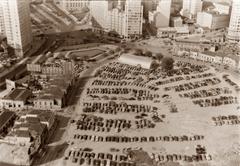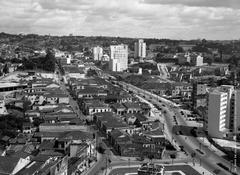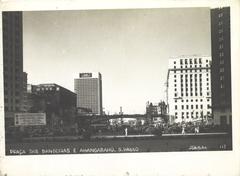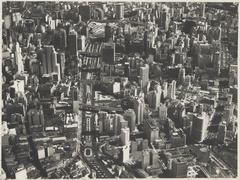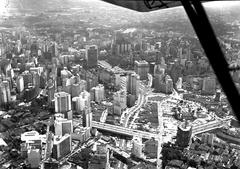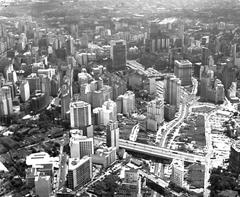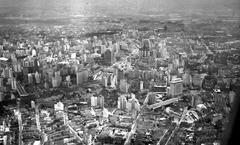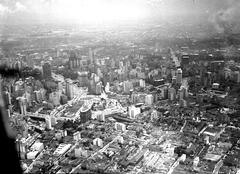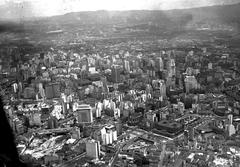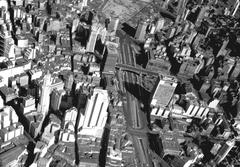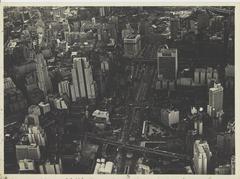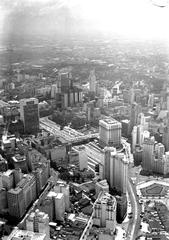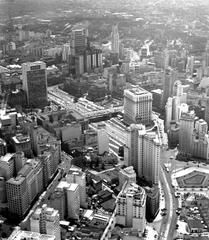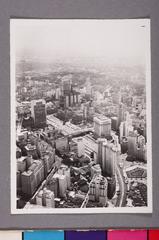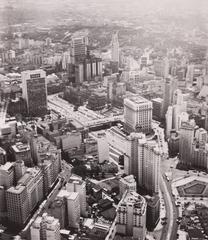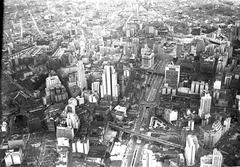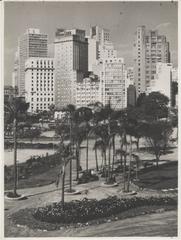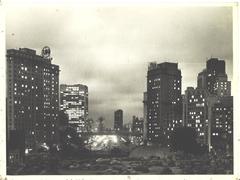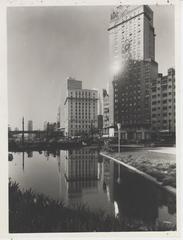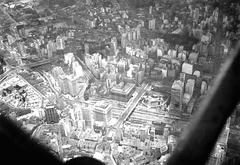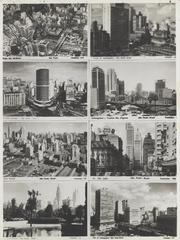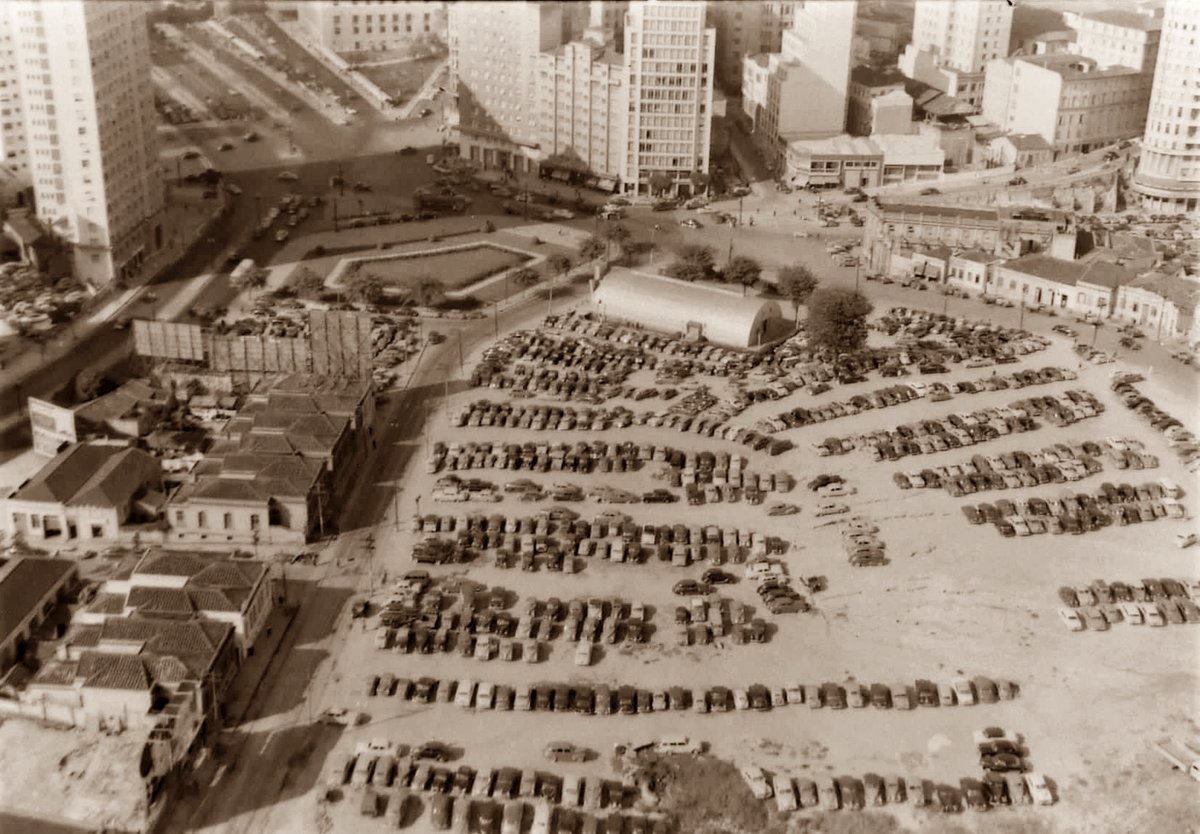
Praça da Bandeira São Paulo: Visiting Hours, Tickets, and Historical Sites Guide
Date: 14/06/2025
Introduction
Located at the heart of São Paulo, Praça da Bandeira is more than a bustling commercial square—it is a living chronicle of the city’s architectural evolution, tragedies and triumphs, and dynamic urban life. Originally known as Largo do Riachuelo, the area has transformed from public gardens to a pivotal transport hub, defined by iconic structures such as the Edifício Joelma (now Edifício Praça da Bandeira) and the historic Edifício da Light. The square’s legacy is forever shaped by the tragic Joelma building fire of 1974, which remains one of the world’s deadliest skyscraper fires and a catalyst for groundbreaking fire safety reforms. Today, Praça da Bandeira embodies São Paulo’s resilience, offering visitors a gateway to its layered history, robust infrastructure, and vibrant cultural scene.
This comprehensive guide provides essential information on visiting hours, ticketing, accessibility, transportation, safety, and cultural highlights, ensuring you make the most of your experience at Praça da Bandeira and its surroundings.
Table of Contents
- Early Development and Construction
- The 1974 Joelma Fire: A Defining Tragedy
- Aftermath and Reconstruction
- Impact on Fire Safety Legislation
- Praça da Bandeira Today: Visitor Information
- Frequently Asked Questions (FAQ)
- Cultural and Social Significance
- Legacy and Ongoing Relevance
- Architectural Heritage and Urban Evolution
- Historical Layers and Urban Transformation
- Terminal Bandeira: Infrastructure and Modernist Influence
- The Historic Edifício da Light: Industrial Heritage and Adaptive Reuse
- The Edifício Joelma (Edifício Praça da Bandeira): Tragedy and Transformation
- The Praça’s Symbolic Mast and Public Art
- Architectural Context: Surrounding Landmarks
- Practical Visitor Information
- Safety and Practical Considerations
- Local Commerce, Dining, and Street Life
- Events and Cultural Activities
- Weather and Seasonal Considerations
- Accessibility for All Visitors
- Photography and Urban Art
- Local Customs and Etiquette
- Sustainability and Responsible Tourism
- Visual Gallery
- Related Articles and Resources
- Conclusion
Early Development and Construction
Originally a serene public garden, Praça da Bandeira evolved rapidly with São Paulo’s modernization drive. The construction of the Edifício Joelma in 1971, with its twin 25-story towers, signaled the city’s ambitions as a burgeoning financial hub. Its strategic location at Avenida Nove de Julho and Rua Santo Antônio placed it at the nexus of commerce and urban development (CNN Brasil).
The 1974 Joelma Fire: A Defining Tragedy
On February 1, 1974, a fire ignited by a faulty air conditioning unit ravaged the Edifício Joelma, claiming 179 to 181 lives and injuring over 300 people. The disaster, one of the deadliest high-rise fires in history, exposed critical lapses in fire safety—such as flammable materials and inadequate emergency exits—and spurred global reforms (Wikipedia).
Aftermath and Reconstruction
In the wake of the tragedy, the building underwent extensive reconstruction, incorporating fire-resistant materials, emergency stairwells, and modern alarms. Upon its reopening in 1978, it was renamed Edifício Praça da Bandeira, marking both a physical and symbolic renewal (Wikipedia; CNN Brasil).
Impact on Fire Safety Legislation
The Joelma fire profoundly influenced fire safety regulations in Brazil and abroad. It led to stricter building codes, mandatory fire escapes, and alarm systems in high-rises. Internationally, cities like Los Angeles adopted new requirements for rooftop helipads in tall buildings, directly inspired by the Joelma incident (Wikipedia).
Praça da Bandeira Today: Visitor Information
Visiting Hours and Access
- Praça da Bandeira is a public square, open 24 hours a day, free of charge.
- Entry to the Edifício Praça da Bandeira (former Joelma building) is restricted to tenants and authorized personnel.
- The Terminal Bandeira bus station operates from approximately 4:30 AM to midnight (Histórias Paulistanas).
Guided Tours and Historical Context
- While the high-rise is not open for public tours, many guided walking tours of São Paulo’s downtown include Praça da Bandeira, offering in-depth historical context about the Joelma fire and the area’s urban transformation (Nomadic Matt).
Accessibility
- Praça da Bandeira is easily accessible via major metro lines—Anhangabaú (Line 3–Red), República (Red and Yellow Lines), and Santa Cecília.
- The Terminal Bandeira is a major city bus hub, providing connections to many districts.
- Pedestrian overpasses, ramps, and accessible walkways facilitate movement for people with reduced mobility.
Nearby Attractions
Within walking distance or a short metro/bus ride, visitors can access:
- Avenida Paulista: São Paulo’s iconic boulevard for shopping, museums, and nightlife.
- MASP (Museu de Arte de São Paulo): Famed for its modernist design and art collection (Next Stop Brazil).
- Municipal Theatre: Architectural gem with guided tours and performances (São Paulo Secreto).
- Praça da República: Known for its artisan market and live music (This is My Happiness).
- Central Cultural Center (Edifício da Light): Historic substation now hosting exhibitions and events (VejaSP).
Photographic Spots
- The Central building’s rooftop offers panoramic city views.
- The square’s monumental flag mast and modernist structures provide compelling urban photography opportunities.
Frequently Asked Questions (FAQ)
Q: Can I tour the Edifício Joelma?
A: The building is not open to the public. However, walking tours often include its history as part of a larger downtown itinerary.
Q: Are there memorials or exhibitions on the Joelma fire?
A: No permanent exhibitions exist within the building, but the event is commemorated through public memory and media features.
Q: How do I get to Praça da Bandeira?
A: Use the Anhangabaú or República metro stations, or one of the many bus lines serving Terminal Bandeira.
Q: Is Praça da Bandeira safe for tourists?
A: The area is generally safe by day, with police presence around the terminal. Remain vigilant against petty theft, especially during busy periods (World Nomads; The Broke Backpacker).
Cultural and Social Significance
The Joelma fire remains a touchstone in São Paulo’s collective memory, shaping conversations about urban safety and resilience. The square’s current identity—anchored by its name, infrastructure, and cultural events—reflects both remembrance and renewal (CNN Brasil).
Legacy and Ongoing Relevance
Praça da Bandeira stands as a testament to São Paulo’s capacity to adapt and thrive. Its layered history—from colonial gardens and the bandeirantes to modernist transport nodes and tragedy—provides invaluable insight into the city’s evolving spirit (Wikipedia).
Architectural Heritage and Urban Evolution
Historical Layers and Urban Transformation
- Once known as Largo do Riachuelo, the area was renamed in 1950 to honor the Brazilian flag (Wikipedia).
- Major infrastructural works, like the Viaduto Doutor Eusébio Stevaux, have cemented its role as a critical urban node.
Terminal Bandeira: Infrastructure and Modernist Influence
- One of São Paulo’s busiest bus terminals, handling up to 110,000 passengers daily.
- Features modernist, functionalist design for efficient passenger flow (Wikipedia).
The Historic Edifício da Light: Industrial Heritage and Adaptive Reuse
- Built in 1926 as an electricity substation; now a cultural center after restoration (VejaSP).
- Hosts exhibitions, music festivals, and offers city views from its terrace.
The Edifício Joelma (Edifício Praça da Bandeira)
- Erected 1969–1971; site of the 1974 fire, now symbolizing resilience and change (São Paulo Secreto).
The Praça’s Symbolic Mast and Public Art
- Features a monumental flag mast, a symbol of national pride and focal point for public events (Wikipedia).
- Area hosts occasional art installations and cultural happenings.
Architectural Context: Surrounding Landmarks
- Near São Paulo Cathedral, Pátio do Colégio, and São Bento Monastery (Sao-Paulo.com).
Practical Visitor Information
- Visiting Hours: Praça da Bandeira is open 24/7; Central cultural center is open Tuesday–Sunday, 10:00 AM–6:00 PM (VejaSP).
- Tickets: Entry to the square is free; some cultural events require tickets.
- Best Time to Visit: Early mornings and late afternoons are less crowded; rush hours showcase local vibrancy.
- Photography: Rooftop views from Central, the flag mast, and the modernist architecture are highlights.
Safety and Practical Considerations
- Remain alert to pickpocketing, especially in crowded areas.
- Avoid isolated spots after dark, and use ride-hailing or taxis for late-night returns (World Nomads).
- Use the Bilhete Único card for seamless public transport access.
Local Commerce, Dining, and Street Life
- The square is a hub for commuters, with food vendors and informal markets.
- Numerous dining options are available in adjacent neighborhoods—try local specialties like feijoada or pastel (Food and Travel Utsav).
Events and Cultural Activities
- While Praça da Bandeira itself does not host major events due to limited open space, its proximity to cultural venues ensures easy access to city festivals, concerts, and art shows (Visite São Paulo).
Weather and Seasonal Considerations
- June is mild (9°C–17°C) with occasional rain. Dress in layers and carry an umbrella (Weather25).
Accessibility for All Visitors
- Wide, flat walkways and ramps facilitate wheelchair access.
- Metro and buses are equipped for reduced mobility, though some historic streets nearby may have uneven pavement.
Photography and Urban Art
- The area is ideal for urban photography, capturing São Paulo’s contrasts.
- While not a street art mecca, nearby neighborhoods display vibrant murals (This is My Happiness).
Local Customs and Etiquette
- Paulistanos are welcoming; basic Portuguese is appreciated.
- Greet others with “bom dia” (good morning) or “boa tarde” (good afternoon).
- Respect for public spaces is expected.
Sustainability and Responsible Tourism
- Support local businesses and artisans.
- Dispose of waste properly and respect heritage sites.
- São Paulo’s authorities promote sustainability—visitors play a vital role (São Paulo Secreto).
Visual Gallery
- Edifício Praça da Bandeira exterior view (twin towers in São Paulo historical district).
- Praça da Bandeira square (vibrant public square in São Paulo).
- Historical image of the 1974 Joelma building fire.
Related Articles and Resources
References
- Joelma Building Fire - Wikipedia
- Praça da Bandeira (São Paulo) - Wikipedia
- Edifício Joelma - CNN Brasil
- Central Cultural Center - VejaSP
- Terminal Bandeira - Histórias Paulistanas
- São Paulo Safety - World Nomads
- Is São Paulo Safe? - The Broke Backpacker
- São Paulo Tourism Official Site
- Edifício Joelma - São Paulo Secreto
- São Paulo Cultural Events Calendar - Visite São Paulo
- Food and Travel Utsav
- Next Stop Brazil
- This is My Happiness
- Sao-Paulo.com
- Weather25
Conclusion
Praça da Bandeira is a crossroads of São Paulo’s past, present, and future—melding historical significance, urban infrastructure, and cultural vitality. Its accessibility, central location, and proximity to key attractions make it an essential stop for those seeking to understand the city’s spirit. Use this guide to plan your visit, navigate safely, and immerse yourself in the stories that have shaped Brazil’s largest metropolis.
For real-time updates, guided tours, and exclusive content, download the Audiala app and follow us on social media.
